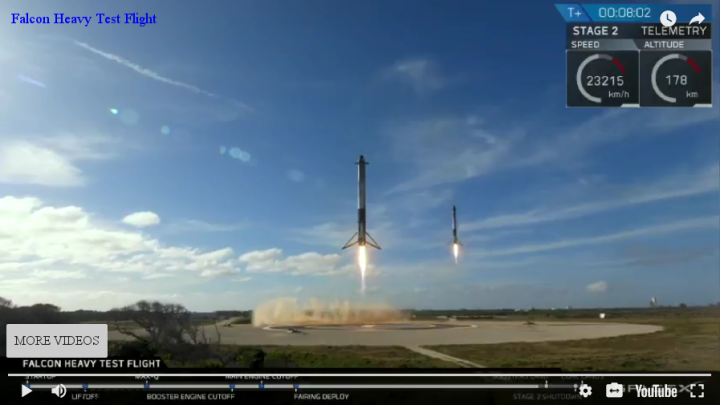Capitalism in space: Several stories today about tomorrow’s long-awaited Falcon Heavy launch, with a launch window opening at 1:30 pm (eastern).
First, the FAA has approved SpaceX’s launch license. This is an example of the absolute irrelevance of government. There was no way this launch license was going to be denied, which means that the FAA’s only purpose here was to simply make work for some bureaucrats.
Second, this story by Bill Harwood provides a nice summary of the context of the launch, including SpaceX’s success at shaking up the launch history in the past decade. The money quote, however, comes when Harwood quotes John Logsdon, founder and now retired director of the Space Policy Institute at George Washington University. For years Logsdon has been the media’s go-to expert on the policy of space, and has consistently expressed unbounded faith and love for NASA projects like SLS. His perspective has always been that of the 1960s, when the space race then established the concept that in order to succeed in space you needed to have a government space program. The idea of a chaotic, competitive effort by private companies has always been inconceivable to him and most liberal policy experts. Thus, when asked about the purpose behind Falcon Heavy as well as Musk’s even bigger proposed rocket, the Big Falcon Rocket (BFR), Logsdon was totally baffled.
“I don’t understand what they’re doing,” Logsdon said. “Elon’s out talking about they’re not going to pursue the Falcon line of rockets, he’s going to put all his efforts into the BFR. So, what is the future of Heavy?”
…Logsdon said he believes it is “good for the country to have two alternative heavy lift vehicles, at least for a little while, to see which one works better.” But he also believes the SLS enjoys enough solid congressional support to “sustain it for some few more years, anyway.”
What Logsdon, being an academic his whole life, has never understood is the concept of profit and efficiency. Unlike the government projects like SLS that Logsdon tends to favor, Falcon Heavy is designed to provide customers a cheap way to get large payloads into orbit. That ability is going to soon provide SpaceX plenty of business, and will make SLS look like a complete waste of money. Furthermore, the BFR is Musk’s declaration that, as the head of a cutting edge private company, he is not going to stand still, but will keep pushing the envelope to provide his customers even better products in the future.
Finally, this CNN article, while typically shallow and not very knowledgeable, does provide one piece of important information, about the launchpad being used.
Because of a special walkway that has been constructed for it, Pad 39A is the only site that can host flights of SpaceX’s new spacecraft, Crew Dragon. That’s the spacecraft the company is developing to help NASA ferry astronauts to and from the International Space Station. Crew Dragon has already faced delays. And destroying the launch pad could mean pushing deadlines back even further, according to U.S. Government Accountability Office Director Cristina Chaplain.
A launch failure on the launchpad would therefore significantly impact the schedule for SpaceX’s private manned capsule. This also explains why Musk has said he would consider this launch a success if the Falcon Heavy simply cleared the launch tower.



